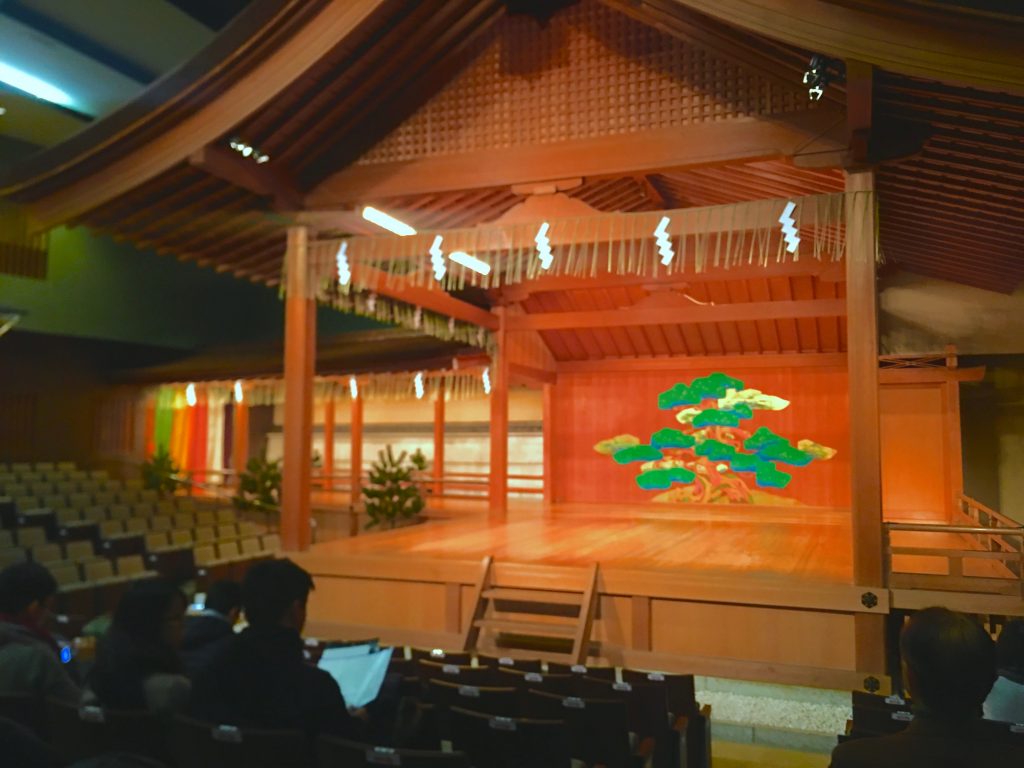We went to the Kanze Kaikan today to watch Noh. It was my time seeing it in person, and it was quite an experience. The first play, Haku Rakuten, was of the kami variety; that being said, it was slow, and dignified, and slow. I have to wonder if the pace of these plays gives the viewer time to find god, or gods. To be honest, I struggled to find the beauty in the first half; it came as a great disappoint because after reading about the aesthetics, theory, and work that goes into Noh, I was ready, and hoping, to enjoy it thoroughly. As Prof. Pellechia suggested during his lecture, I looked to their movements, then to their costumes, then listened to the music, and continued to cycle about. The only thing that always held my attention was the music, and I think I would like to do further research in the future as a result.
When the kyōgen came out to signal the end of the first half, and summarize it, I felt somewhat relieved. He moved at a faster pace and shouted quite loudly; however, after a few minutes the moment lost its patina, and again I struggled to hold on.
The entrance of the deity Sumiyoshi changed all of this. It felt like a reward for the piety and faith with which I had believed in Noh, at times pinching myself to stay awake. The costuming was supremely beautiful, a wash of white and gold that asserted its divinity among the earthly colors of the stage and performers. I was enthralled by the dance. It was slow again this time, but this time imbibed with something different. An explanation of said feeling escapes me, but I think I came to understand yugen a bit more. The dance, as compared to “dance,” was stripped to an essential; every stomp of a foot felt like a Buddhist gong, and the sound was a quiet eruption that rippled out like pond water after the ingesting of a stone. Where the chanting, music, and dialogue was previously cacophonous, now there was harmony. Though Noh does not have any religious affiliation, the aesthetic, theoretical base which forms it, and the creators who’s beliefs informed it, have a visible connection to Buddhism. In fact, I felt like we were all, including the performers, participating in some sort of active meditation. To get the most out of the experience your full attention must be placed somewhere. This idea coupled with the style of the stage makes sense to me; there is no best view, so long as you focus on something.
Ikkaku Sennin was less moving, though it was definitely more entertaining. During the first half of Haku Rakuten ironically enough, I found myself thinking that Noh plays were probably most enjoyable for a new viewer in reverse order. I think that’s still true in general, just not for me, though having only seen two plays I cannot be sure of anything. The staging made want to see an onna play. I loved the Princess’ costuming.
All in all it was quiet a wonderful day. I would definitely go to more Noh performances.

Kanze Kaikan, Noh Theater
